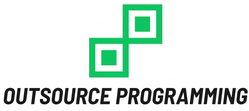Are you tired of the endless back-and-forth in product development? The struggle to bridge the gap between concept and reality can be daunting. But fear not, as there is a game-changer that can revolutionize your prototyping process. Enter outsourcing – the secret weapon to streamline your product lifecycle and bring your ideas to life with efficiency and precision. Let’s delve into how outsourcing can transform the way you approach prototyping and propel your projects towards success!
Understanding the Prototype Gap in Product Lifecycle
Picture this: you have a brilliant idea for a new product, but translating that vision into a tangible prototype is where the challenge lies. The prototype gap refers to the space between concept and execution in the product lifecycle, where ideas often get lost in translation. It’s like trying to navigate through uncharted waters without a map – daunting yet full of potential.
Prototyping plays a crucial role in product development as it allows you to test and refine your design before mass production. However, the process can be complex and time-consuming if not managed efficiently. This gap can lead to delays, increased costs, and missed opportunities for innovation.
Understanding this critical phase is key to overcoming obstacles and accelerating your path from ideation to market-ready products. By addressing this gap head-on with strategic solutions like outsourcing, you can revolutionize your prototyping process and set yourself up for success in the ever-evolving market landscape.
The Traditional Approach to Prototyping
In the traditional approach to prototyping, companies would invest significant time and resources in creating physical models of their products. This process often involved multiple iterations and revisions before finalizing a design for production.
Prototyping traditionally required specialized skills and equipment, making it costly and time-consuming for many businesses. Companies had to rely on in-house teams or local suppliers for prototyping, limiting their options and potentially slowing down the development process.
Traditional prototyping methods were sometimes limited in terms of materials and technology available. This could result in less innovative or functional prototypes that did not fully reflect the intended design vision.
While the traditional approach to prototyping served its purpose for many years, advancements in technology and globalization have paved the way for more efficient and cost-effective solutions like outsourcing.
Challenges Faced in the Traditional Approach
The traditional approach to prototyping in product development has its fair share of challenges. One common issue is the time-consuming nature of creating physical prototypes using in-house resources. This process can be slow and costly, especially when modifications or iterations are needed.
Another challenge faced is the limited expertise available within a company’s internal team for complex prototyping tasks. Without access to specialized skills or knowledge, achieving the desired prototype quality can be difficult.
There is often a lack of flexibility in the traditional approach, making it challenging to adapt quickly to changes or feedback during the prototyping phase. This rigidity can result in delays and missed opportunities for innovation.
Maintaining an up-to-date infrastructure for prototyping within a company can be expensive and resource-intensive. Investing in equipment and training for occasional prototype needs may not always be cost-effective in the long run.
Introducing Outsourcing as a Solution
As businesses strive for innovation and efficiency, the traditional approach to prototyping is evolving. Introducing outsourcing as a solution has become a game-changer in bridging the prototype gap in product lifecycle management.
Outsourcing brings expertise from around the globe right to your doorstep. It allows companies to access specialized skills and resources that may not be readily available in-house. By tapping into external talent, firms can accelerate their product development process while maintaining high quality standards.
Outsourcing provides a cost-effective way to manage fluctuating workloads without compromising on deliverables. Whether it’s design, testing, or production, outsourcing offers flexibility and scalability that can adapt to changing project requirements.
Embracing outsourcing as part of your prototyping strategy opens up endless possibilities for collaboration and growth. It fosters a culture of continuous improvement and strategic partnerships that drive success in today’s fast-paced business environment.
Benefits of Outsourcing for Bridging the Prototype Gap
Outsourcing can offer numerous benefits when it comes to bridging the prototype gap in product development. By outsourcing prototyping tasks to specialized firms or professionals, companies can tap into a pool of expertise that they may not have in-house. These external partners bring fresh perspectives and innovative ideas to the table, enhancing the quality of prototypes.
Outsourcing allows for faster turnaround times as dedicated teams focus solely on prototyping without being bogged down by other internal priorities. This acceleration in the prototype phase can significantly speed up the overall product development process, giving businesses a competitive edge in bringing their products to market quicker.
Cost-effectiveness is another key advantage of outsourcing prototyping. By leveraging external resources only when needed, companies can reduce overhead costs associated with maintaining an in-house prototyping team full-time. This flexibility enables organizations to allocate resources more efficiently and invest savings back into other areas of product development.
Outsourcing provides access to state-of-the-art technologies and equipment that may be prohibitively expensive for smaller companies to acquire independently. By partnering with experienced prototyping providers who already possess cutting-edge tools, businesses can ensure that their prototypes are developed using the latest methodologies and materials available in the industry.
Embracing outsourcing for prototyping not only fills gaps within a company’s internal capabilities but also propels innovation and efficiency throughout the entire product lifecycle.
Tips for Successful Outsourcing
When it comes to successful outsourcing for bridging the prototype gap in product lifecycle, there are a few key tips to keep in mind. Clearly define your project requirements and expectations upfront. This will help ensure that both parties are on the same page from the start.
Communication is crucial when working with an outsourced team. Make sure to establish regular check-ins and provide feedback throughout the process. This will help prevent any misunderstandings and keep the project on track.
It’s also essential to do your due diligence when selecting an outsourcing partner. Look for companies with expertise in your industry and a proven track record of delivering high-quality prototypes.
Setting realistic timelines and milestones is important for monitoring progress and ensuring that deadlines are met. Be flexible and open to adjustments as needed to accommodate unforeseen challenges that may arise during the prototyping process.
Don’t forget to build a strong relationship with your outsourced team. Trust, respect, and collaboration are key components of a successful partnership that can lead to efficient product development outcomes.
Embracing Outsourcing for Efficient Product Development
Embracing outsourcing as a solution to bridge the prototype gap in product lifecycle not only addresses challenges faced in traditional approaches but also offers a more efficient and cost-effective way of developing products. By leveraging the expertise and resources of external partners, companies can streamline their prototyping processes, reduce time-to-market, and ultimately enhance product quality.
In today’s fast-paced business environment, embracing outsourcing is key to staying competitive and innovative in product development. So, why wait? Start exploring outsourcing options for your next project and experience the benefits firsthand!


Leave A Comment Cancel reply